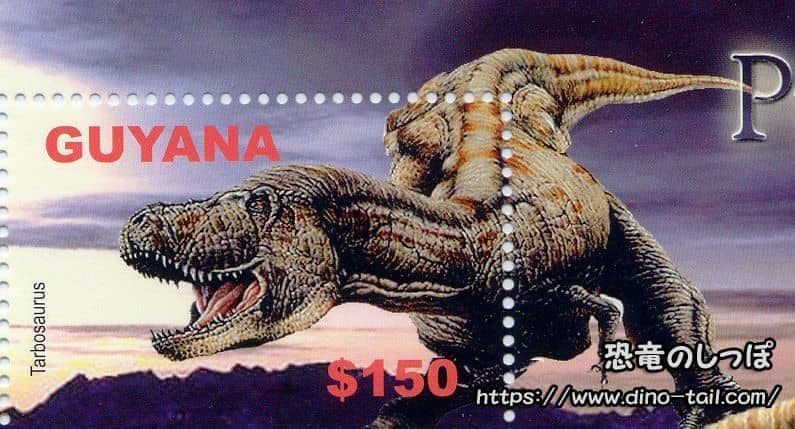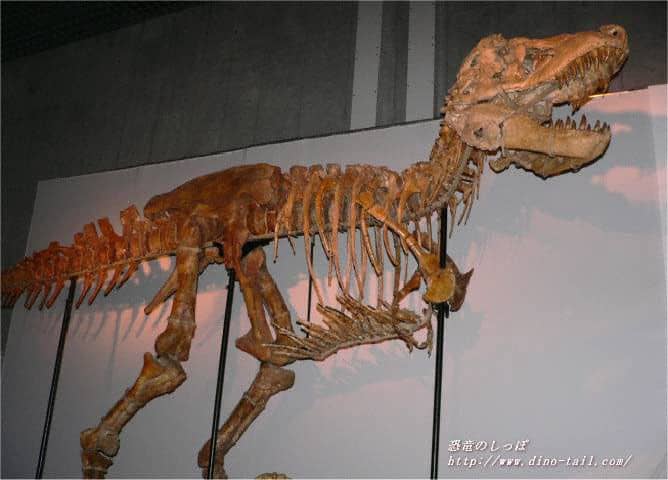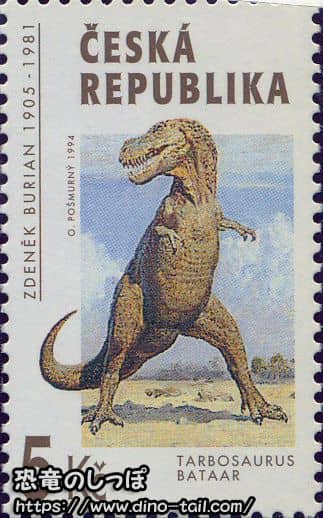About Tarbosaurus
| Scientific Name (Genus) | Tarbosaurus |
| Meaning of Name |
Alarming lizard
tarbos (alarm, terror) [Greek] - sauros (lizard) [Greek] |
| Classification | Saurischia, Theropoda (Tetanurae, Coelurosauria, Tyrannosauridae) |
| Total Length | Approx. 9 - 12m |
| Diet | Carnivorous |
| Period | Late Cretaceous (approx. 75-70 million years ago) |
| Sub-classification/Species | Tarbosaurus bataar |
| Year of Paper Publication | 1955 |
| Publication |
Giant carnivorous dinosaurs of Mongolia.
Doklady Akademii Nauk SSSR. 104. by Maleev, Evgeny A. 1955. |
Features
Tarbosaurus, found in Mongolia, is considered a close relative of the North American Tyrannosaurus. It was the apex predator of Asia during the Late Cretaceous (about 75-70 million years ago).
Its forelimbs were even shorter than those of Tyrannosaurus and had two fingers. Its sharp teeth could be up to 18 cm long. Small holes around its mouth are thought to be traces of nerves and blood vessels.
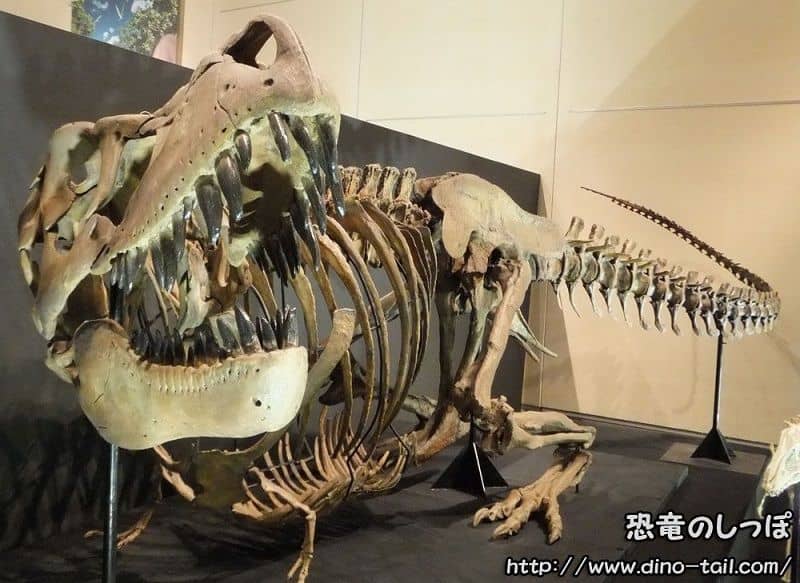
A Tarbosaurus skull fossil discovered in 1948 (specimen number PIN 553-1) had a preserved braincase, allowing the shape of its brain to be measured. The positions of several cranial nerve roots, such as the trigeminal and accessory nerves, were different from those of the North American Tyrannosaurus. The brain volume of the 12-meter-long Tarbosaurus was estimated to be only 184 cm³. The cranial nerves related to vision were small, while the olfactory bulb and vomeronasal organ, which govern the sense of smell, were large. This suggests it was highly sensitive to smells.
These differences from Tyrannosaurus are thought to be the result of adaptation to different ecosystems. While Tyrannosaurus developed an incredibly powerful bite force to crush the bones of sturdy prey like Triceratops, supported by a robust skull and stereoscopic vision for accurate distance judgment, Tarbosaurus may have evolved a lighter, more slender skull suited for hunting more agile prey like Saurolophus.
Comparing Juvenile and Adult Skulls
Let's compare the skull fossils of a juvenile (child) and an adult Tarbosaurus.
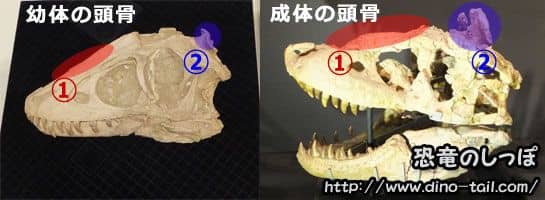
- ① The maxilla (upper jaw bone), which is low in juveniles, becomes higher and more prominent in adults.
- ② The projection at the top of the head becomes taller in adults.
The adult skull has a structure that diffuses (dissipates) strong forces, but the delicate juvenile skull lacks this, changing into a powerful skull as it grows. Its biting force likely also strengthened with growth. As a child, it may have eaten the softer parts of its prey.
Additionally, the juvenile skull has sclerotic rings in its eyes. This suggests it could maintain vision even in the dark. While this indicates that juvenile Tarbosaurus may have been nocturnal, it is not known whether adults were also nocturnal.
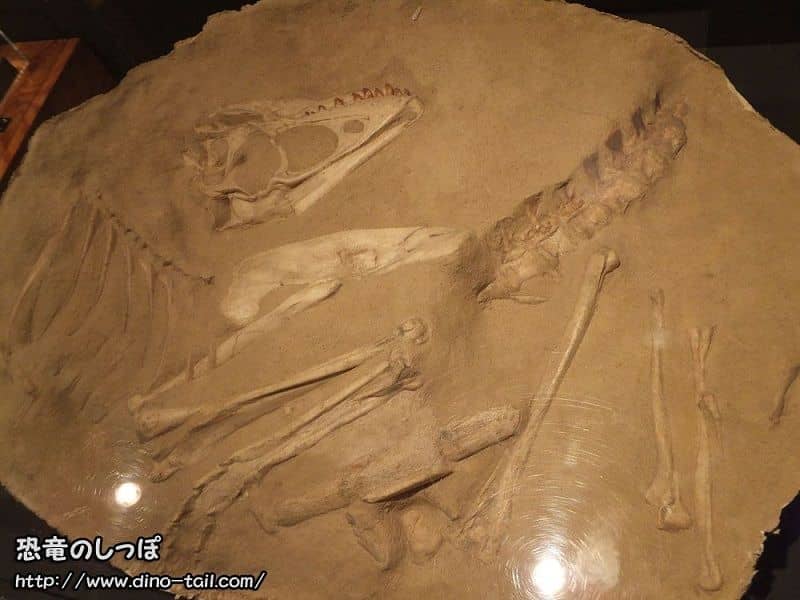
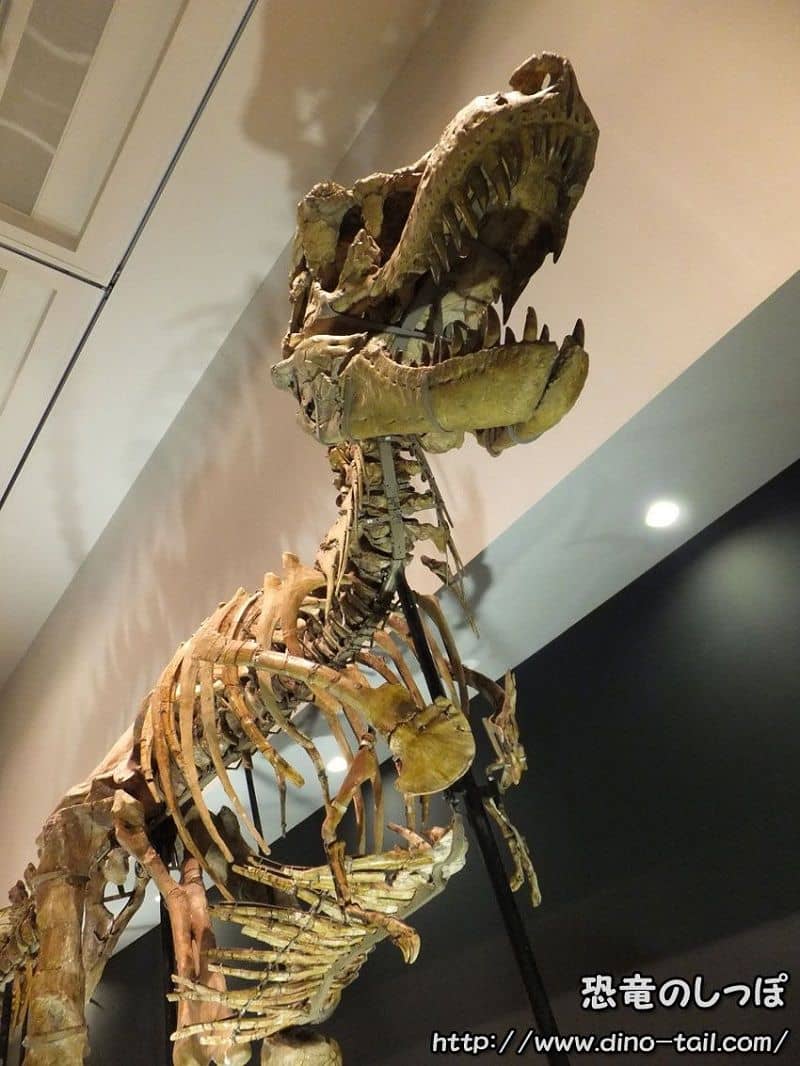
King of Asia, or Another Species of Tyrannosaurus?
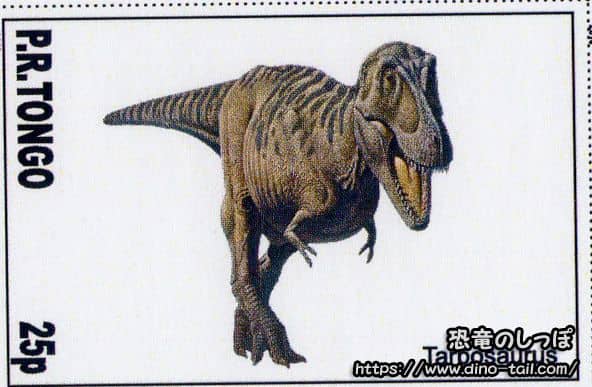
The classification of Tarbosaurus has been one of the biggest debates in paleontology since its discovery. The question is: "Is Tarbosaurus an independent genus, or is it an Asian species of the genus Tyrannosaurus ( Tyrannosaurus bataar )?"
Currently, most researchers consider Tarbosaurus to be an independent genus, but both views have their supporting evidence:
-
Arguments for Tarbosaurus as an independent genus (majority view):
- The skull of Tarbosaurus is longer, narrower, and lighter than that of Tyrannosaurus.
- The structure of the lower jaw has a unique locking mechanism not found in Tyrannosaurus.
- The way stress is distributed across the skull during a bite is clearly different.
-
Arguments for it being a species of Tyrannosaurus:
- The differences between them are at the species level, like the difference between a modern lion and a tiger, and not significant enough to separate the genera.
- They are the closest sister species and can be considered geographic variations.
This debate is a prime example of the difficulty in defining "genus" and "species" in biology and is likely to continue in the future.
Discovery and Publication
In 1946, a joint Soviet-Mongolian expedition was conducted in the Gobi Desert of Mongolia. They discovered a large skull and vertebrae in the Nemegt Formation.
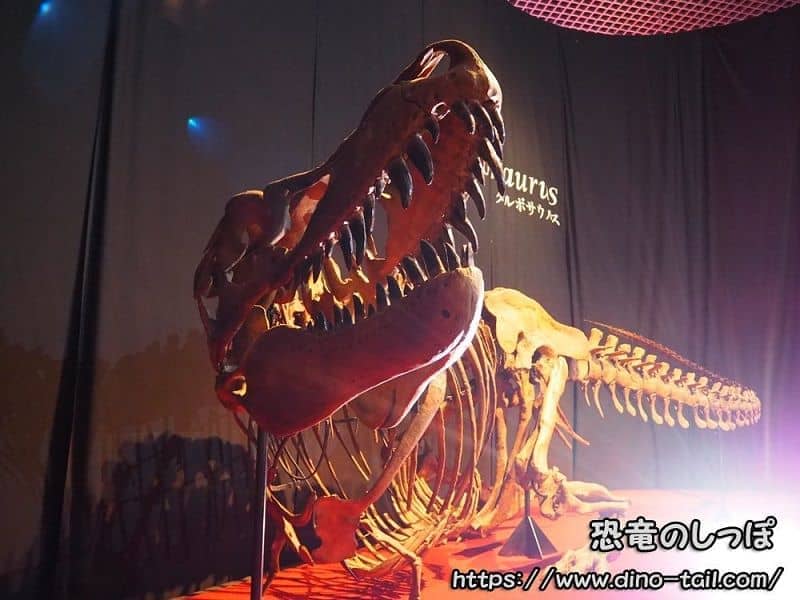
In 1955, Soviet paleontologist Evgeny Maleev described it as a new species of Tyrannosaurus, Tyrannosaurus bataar, based on specimen number PIN 551-1.
On the other hand, Soviet paleontologist A.K. Rozhdestvensky believed that the specimens found in Mongolia belonged to a different genus than the North American Tyrannosaurus. Later, paleontologists, including Maleev, acknowledged the difference from Tyrannosaurus, and it was renamed Tarbosaurus.
Nevertheless, until around 2000, some scholars still argued that Tarbosaurus should be included in the genus Tyrannosaurus, but a paper published in 2003 pointed out clear differences in the skull.

The Auction and Smuggling Incident
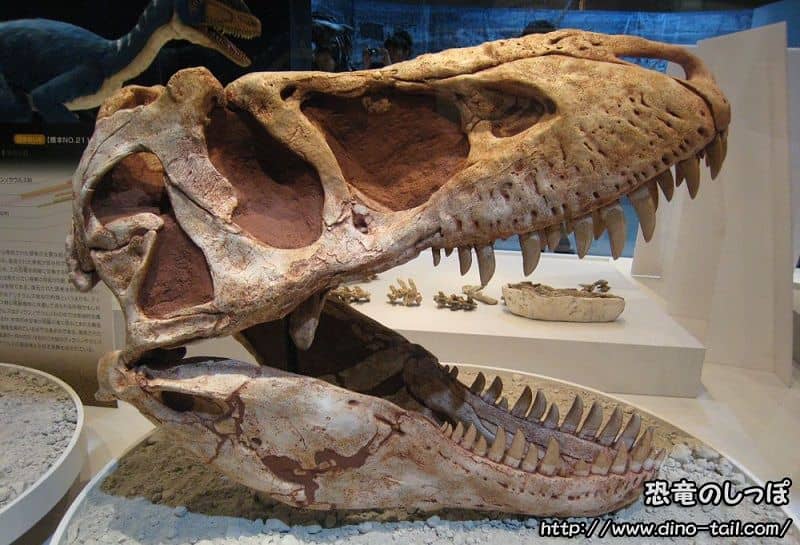
In June 2012, a complete Tarbosaurus skeleton, listed as "Tyrannosaurus bataar," was sold for $1.05 million (about 83 million yen at the time) at an auction in New York. It was a nearly complete skeleton measuring 7.31 meters long.
However, the fossil was seized by the U.S. Attorney's Office in New York and U.S. Immigration and Customs Enforcement on the grounds that it had been smuggled from Mongolia via the UK with false declarations.
The Tarbosaurus bataar, made famous by the auction and smuggling incident, was returned to Mongolia in May 2013.
Tarbosaurus Stamp and Fossil Gallery
